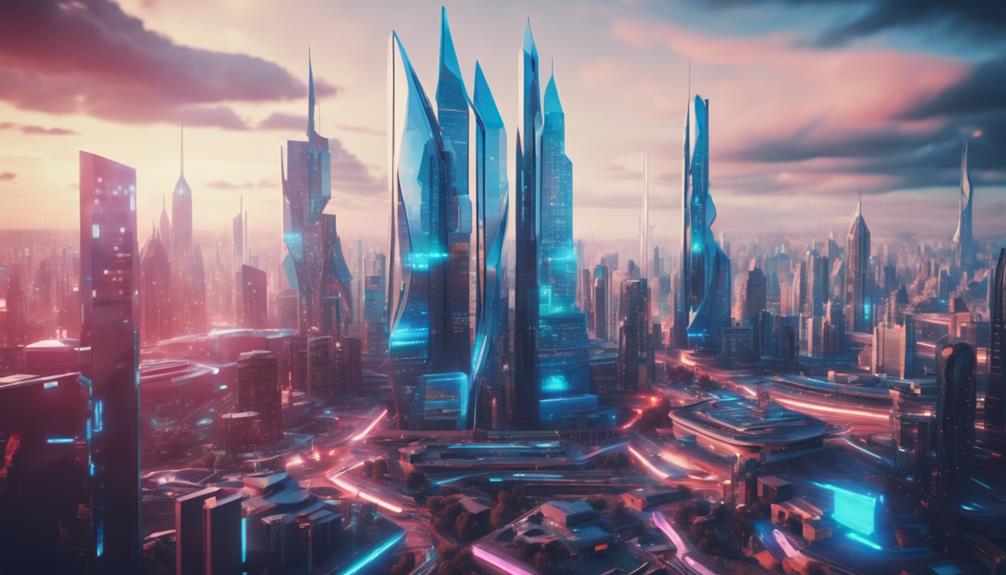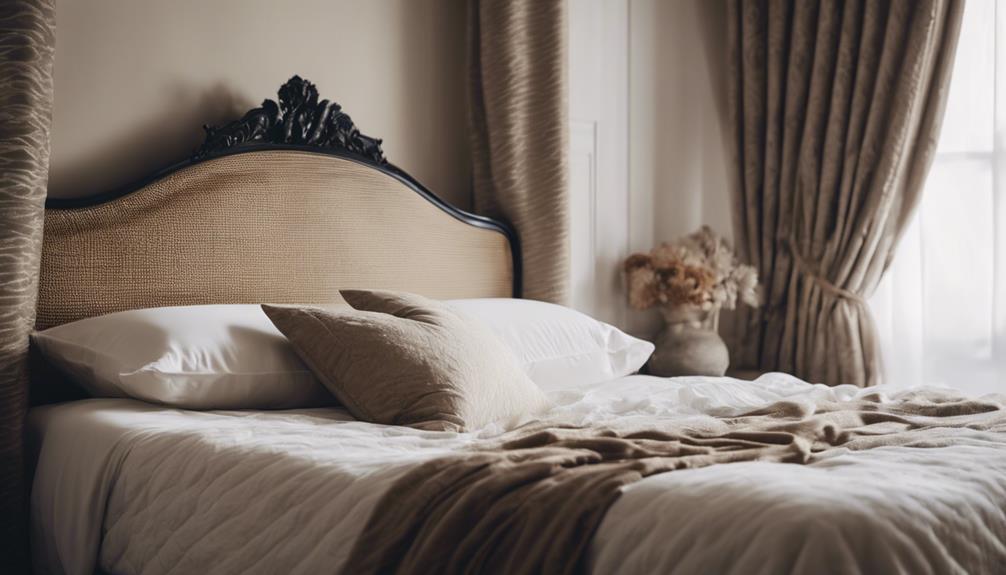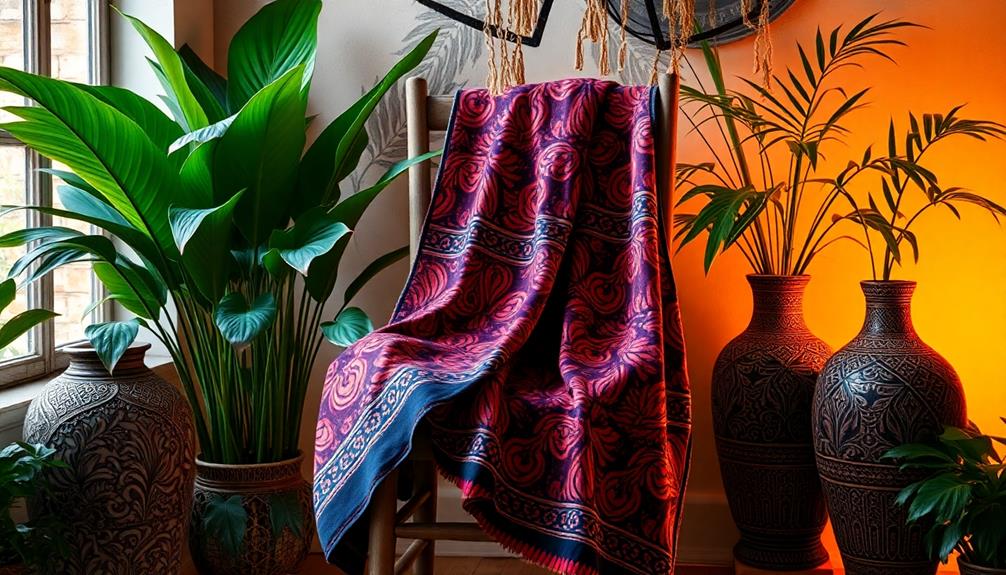Step into a realm where architecture challenges conventional urban planning with a bold style that dares to push boundaries. Explore how architects blend traditional elements with modern touches, incorporating adobe walls, inner gardens, and water features to combat high temperatures. Witness the harmony of beauty and usability as a perfect balance is achieved. Immerse yourself in the realm of sustainable design integration and observe the intersection of ancient cooling methods with modern advancements. The future of architectural design is now, reshaping what is considered cool in warm climates.
Key Takeaways
- Blend traditional cooling methods (mud brick, courtyards) with modern design.
- Prioritize energy efficiency in hot climates for sustainable architecture.
- Incorporate passive cooling techniques (water features, natural ventilation).
- Revolutionize architectural design with sustainable practices.
- Emphasize old cooling strategies for a cooler, more sustainable future.
Architectural Innovations in Hot Climates
In hot climates, architectural innovations have played a pivotal role in developing sustainable cooling solutions. Modern design principles often emphasize clean lines and open interior spaces to enhance airflow and natural ventilation. Architects are now blending traditional cooling techniques with contemporary aesthetics to create comfortable living environments while reducing energy consumption.
One notable figure in this domain is Hassan Fathy, an Egyptian architect who championed mud brick construction and traditional cooling methods. His focus on incorporating elements like mud brick walls, courtyards, and water features not only provided cooling effects but also inspired a new wave of architects to revisit these age-old practices.
Preservation of architectural heritage, such as Fathy's homes in New Gourna, serves as a fundamental foundation for understanding and implementing effective cooling strategies in modern architecture. By integrating traditional cooling technologies with innovative design, architects can achieve a harmonious balance between functionality, aesthetics, and environmental sustainability in hot climates.
Traditional Cooling Techniques and Technologies
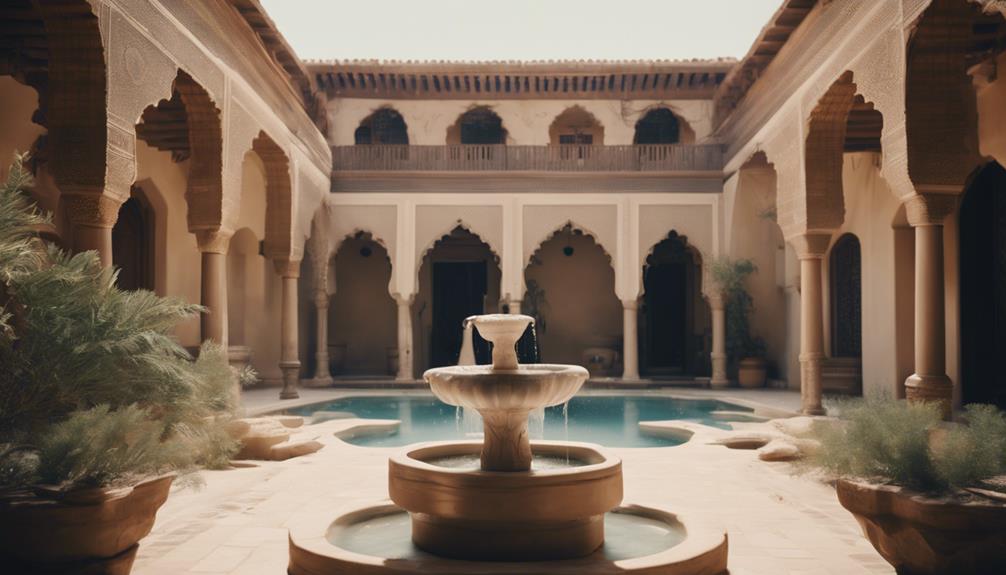
You can explore the effectiveness of mud brick construction in keeping interiors cool by leveraging their thick walls.
Courtyards play an essential role in traditional cooling methods by providing shade and encouraging airflow within buildings.
Additionally, water features like pools and fountains can aid in cooling through evaporative processes, showcasing the ingenuity of traditional cooling techniques.
Mud Brick Benefits
Mud brick construction offers a sustainable and cost-effective solution for cooling buildings in hot climates, utilizing traditional techniques that prioritize natural ventilation and thermal properties. In regions like Egypt, mud brick buildings with their thick walls effectively trap cool air inside, providing a comfortable indoor environment without excessive energy usage. To showcase the benefits of mud brick construction further, let's explore a comparison of mud brick buildings with modern constructions:
| Features | Mud Brick Buildings | Modern Constructions |
|---|---|---|
| Cost-Effectiveness | Affordable | Expensive |
| Cooling Efficiency | Natural ventilation | Reliance on AC systems |
| Sustainability | Eco-friendly | Varied sustainability |
| Thermal Properties | Excellent insulation | Standard insulation |
| Maintenance | Simple upkeep | Complex maintenance |
This comparison highlights the advantages of mud brick buildings regarding cost, cooling efficiency, sustainability, thermal properties, and maintenance when compared to modern constructions.
Courtyards for Cooling
Courtyards have long served as an essential component of traditional cooling techniques in hot climates, harnessing natural ventilation and shading to create comfortable living spaces.
Traditional courtyard designs vary widely, from the elaborate courtyards of Iranian architecture to the simpler layouts of Ottoman-era houses in Turkey.
Water features like pools and fountains in courtyards aid in cooling through evaporation, contributing to the creation of a refreshing microclimate.
Historically, residents utilized courtyards not only for cooling off but also for social gatherings and as transitional spaces between different parts of the house.
Courtyards are an integral part of traditional cooling techniques, promoting airflow and enhancing the overall comfort of living spaces in hot regions.
Water Features' Cooling
Water features, such as pools and fountains, play a pivotal role in traditional cooling techniques by harnessing evaporation to lower temperatures in hot climates. These elements aren't merely decorative but serve a functional purpose in cooling buildings naturally.
Courtyards with water elements, like those found in Ottoman-era houses in eastern Turkey, create microclimates that enhance the cooling effects by providing a source of evaporative cooling. Additionally, strategically placing trees near water features further contributes to natural cooling through shading and evapotranspiration processes.
Buildings like the Diyarbakir courtyard houses demonstrate how incorporating water features helps maintain comfortable indoor temperatures without relying heavily on energy-intensive cooling systems. Beyond their cooling benefits, water features also offer a soothing ambiance through the calming sound of flowing water, enhancing the overall experience of the space.
Traditional cooling techniques that leverage water features showcase a sustainable approach to cooling in hot climates while creating aesthetically pleasing environments.
Preservation of Architectural Heritage
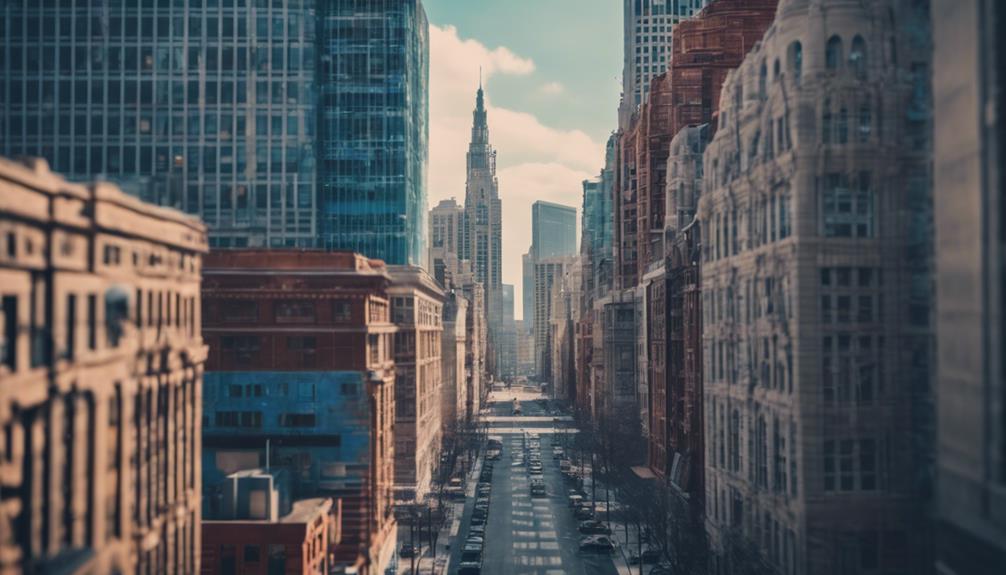
Preserving traditional cooling technologies and architectural heritage is crucial amidst threats posed by political suppression and economic challenges. In the face of these obstacles, it becomes vital to safeguard the rich cultural and historical legacy embedded in architectural structures.
Here are five key points to bear in mind in the preservation of architectural heritage:
- Political suppression and economic factors pose significant threats to the conservation efforts of traditional cooling technologies and architectural heritage.
- Losses to local architectural heritage are evident, with many restored historic structures failing to regain their full functionality.
- Neglect of old cooling technologies in vernacular architecture and the prevalence of modern air conditioners in places like Cairo hinder the preservation of cooling architectural heritage.
- The House of Suhaymi in Cairo serves as a prime example of passive cooling designs, underscoring the importance of integrating history, identity, and climate aspects in architectural discussions.
- Achieving a balance between profit-driven markets and heritage conservation is paramount in the preservation of traditional cooling technologies and architectural heritage.
Contemporary Sustainable Architectural Practices
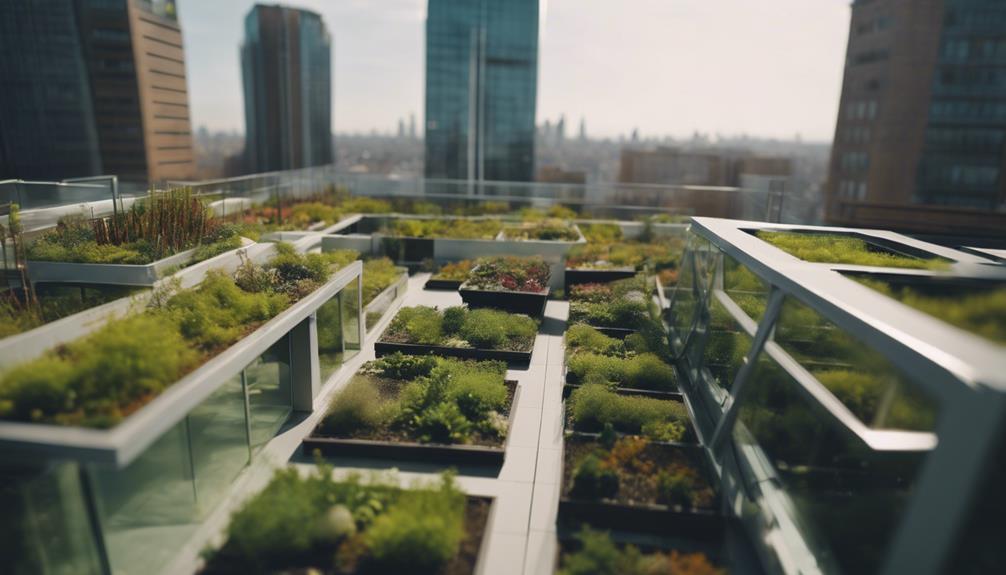
Incorporating traditional cooling techniques into modern architectural designs is a key strategy for promoting sustainability in contemporary buildings. Architects are blending age-old methods like mud brick construction and courtyard layouts with modern cooling technologies such as electric fans and insulation to create environmentally friendly structures.
By comparing these traditional techniques with current practices, architects are able to prioritize sustainability in hot climates. The future of architectural practices, particularly in regions like Egypt, highlights the significance of integrating history, identity, and climate change considerations to achieve sustainable designs.
Sustainable architectural discourse in these areas is steering towards reinventing traditional cooling techniques by drawing inspiration from past practices. Emphasizing the importance of learning from history, architects are innovating to develop sustainable solutions that are both environmentally conscious and culturally relevant.
Aesthetics and Functionality in Architecture
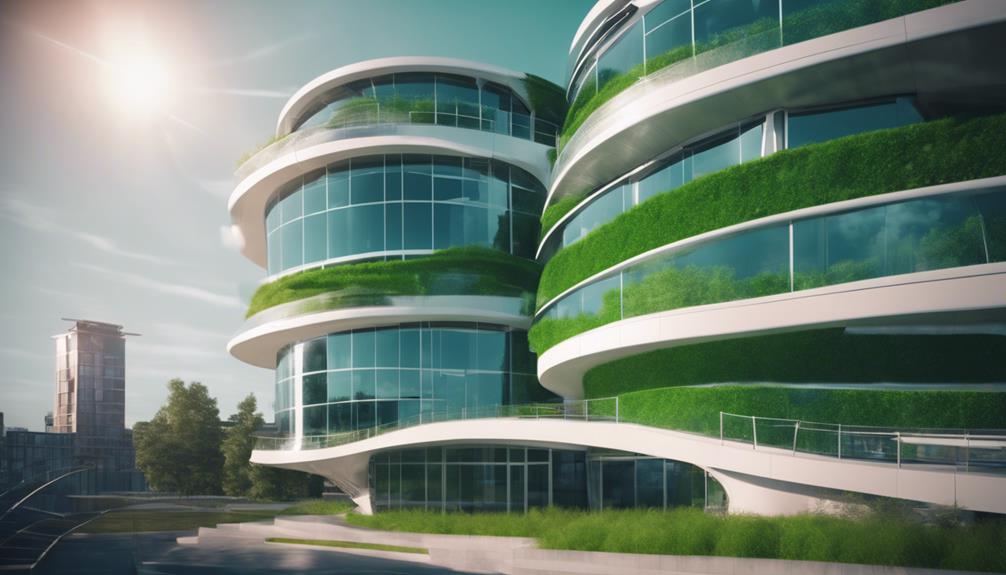
Balancing aesthetics and functionality in architecture is essential for creating designs that are both visually appealing and highly practical. Aesthetics in architecture encompass the visual appeal and beauty of a building's design, focusing on elements such as form, symmetry, and materials used.
On the other hand, functionality in architecture emphasizes how well a building fulfills its intended purpose, highlighting aspects like practicality, efficiency, and usability. The integration of aesthetics and functionality in architecture results in harmonious and balanced designs that aren't only visually pleasing but also highly functional.
Architects aim to strike a delicate balance between aesthetics and functionality to ensure that buildings not only look good but also effectively serve their occupants. Successful architectural designs carefully consider both aesthetics and functionality to create spaces that are visually appealing, practical, and user-friendly.
- Aesthetics focus on visual appeal and beauty of design
- Functionality emphasizes meeting the building's purpose effectively
- Integration creates harmonious and balanced designs
- Architects strive for a delicate balance between aesthetics and functionality
- Successful designs consider both aesthetics and functionality for user-friendly spaces
Future of Architectural Design
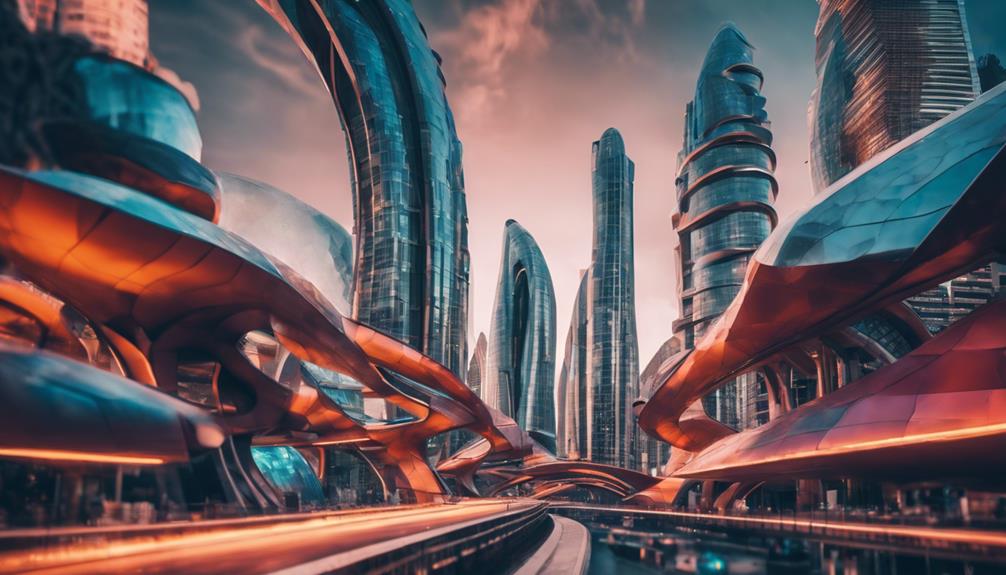
You can expect architects to continue blending traditional cooling methods with contemporary designs for sustainability in hot climates.
The future of architectural design will focus on prioritizing energy efficiency through the preservation and adaptation of old cooling techniques.
Expect to see more integration of passive cooling strategies like water features and natural ventilation to reduce reliance on mechanical cooling systems.
Sustainable Design Integration
Architects are revolutionizing the future of architectural design by prioritizing sustainable design integration, focusing on traditional cooling methods for energy-efficient and environmentally friendly buildings.
Incorporating old cooling techniques like mud brick construction and courtyards into contemporary buildings is becoming a prevalent practice.
The future of architectural design in hot climates is shifting towards emphasizing traditional cooling methods for their sustainable benefits.
Comparisons between modern cooling technologies such as electric fans and insulation against traditional techniques are being made to advocate for sustainable design integration.
Architectural discourse in regions like Egypt is evolving to include considerations of history, identity, and climate change in the pursuit of sustainable architectural practices.
Learning from the wisdom of past architectural practices stands as a cornerstone for reinventing traditional cooling methods to pave the way for a sustainable future in architectural design.
Climate-Conscious Building Techniques
Innovating sustainable design practices, the future of architectural design is increasingly shaped by climate-conscious building techniques that prioritize environmental responsibility and energy efficiency.
Architects are blending traditional cooling methods like mud brick construction, courtyards, and water features with modern technologies such as electric fans, swamp coolers, and insulation to create sustainable cooling solutions.
By combining historical wisdom with contemporary innovation, architects are endeavoring to assess the sustainability and efficiency of cooling systems in hot climates.
Emphasizing the importance of traditional cooling techniques, the architectural landscape is evolving to integrate old practices into new designs, balancing comfort with environmental consciousness.
This shift in architectural discourse, particularly in regions like Egypt, underscores the significance of considering history, identity, and climate change in the pursuit of sustainable architectural practices.
As the industry continues to embrace climate-conscious building techniques, the future of architecture holds promise for environmentally friendly and energy-efficient structures.
Modernizing Traditional Cooling
Embracing a blend of historical wisdom and modern innovation, sustainable architectural design is revolutionizing traditional cooling techniques for a more energy-efficient future. Architects are now incorporating traditional cooling methods such as mud brick construction and courtyard designs into contemporary buildings to provide sustainable cooling solutions.
By comparing the effectiveness and sustainability of modern cooling technologies like electric fans and insulation with traditional practices, architects are exploring ways to optimize energy efficiency in architectural design.
The future of architectural practices, particularly in hot climates, underscores the significance of prioritizing traditional cooling techniques to enhance sustainability and reduce energy consumption. Architectural discourse in regions like Egypt is evolving to encompass considerations of history, identity, and climate change, promoting the adoption of sustainable architectural practices.
Learning from past architectural wisdom is deemed pivotal for reimagining traditional cooling methods in present-day designs, paving the way for a more sustainable future.
- Incorporating traditional cooling techniques into modern buildings
- Comparing modern cooling technologies with traditional methods
- Prioritizing traditional cooling techniques for energy efficiency
- Evolving architectural discourse to include historical and climate considerations
- Emphasizing the importance of learning from past architectural practices
Frequently Asked Questions
What Is the Best Architecture for Hot Climates?
For hot climates, consider mud brick construction due to its affordability and thermal properties. Traditional cooling techniques like courtyards and water features enhance natural ventilation. Integrate modern technologies with these methods for sustainable designs.
What Is the Most Controversial Architecture Style?
Brutalism is the most controversial architecture style. It splits opinions with its raw concrete structures. Some love its boldness, while others criticize its starkness. Did you know that Brutalism's popularity surged in the 1950s to 1970s?
What Is the Blueprint of the Architectural Plan?
The blueprint of the architectural plan integrates mud brick construction, courtyards, water features, and strategic room placement for natural cooling. It aims to balance traditional cooling techniques with modern needs for sustainability and efficiency, emphasizing historical methods in contemporary buildings.
How Do These Homes in the Hottest Places Keep Cool Without Ac?
To keep cool without AC in scorching climates, homes use mud brick's insulating magic, courtyards for airflow, and water features for evaporative coolness. Embrace the ancient wisdom of serdabs and strategic room usage for natural comfort.
How Does the Blueprint Bombshell Architectural Style Compare to the Neo-Eclectic Style?
The Blueprint Bombshell architectural style is known for its bold, futuristic designs, while the architects in awe: neoeclectic style incorporates a mix of traditional and modern elements. The Blueprint Bombshell style is more avant-garde, whereas the neoeclectic style focuses on blending different architectural traditions. Both styles offer unique and inspiring options for modern buildings.
Can I Incorporate Architectural Styles into DIY Crafts Using Cricut?
Yes, you can easily incorporate architectural styles into your DIY crafts using Cricut. For example, you can create a diy bluey door sign crafted with intricate details reminiscent of Victorian architecture. The Cricut machine allows you to cut and shape materials to achieve the desired architectural aesthetic in your craft projects.
Conclusion
As you navigate the blueprint bombshell of architectural design in hot climates, remember that innovation and tradition can coexist harmoniously.
Just as the cooling techniques of the past have paved the way for sustainable practices of the future, the beauty and functionality of architecture continue to evolve.
Embrace the challenge of balancing aesthetics and functionality, and let the blueprint bombshell inspire you to create spaces that not only withstand the heat, but also stand the test of time.
